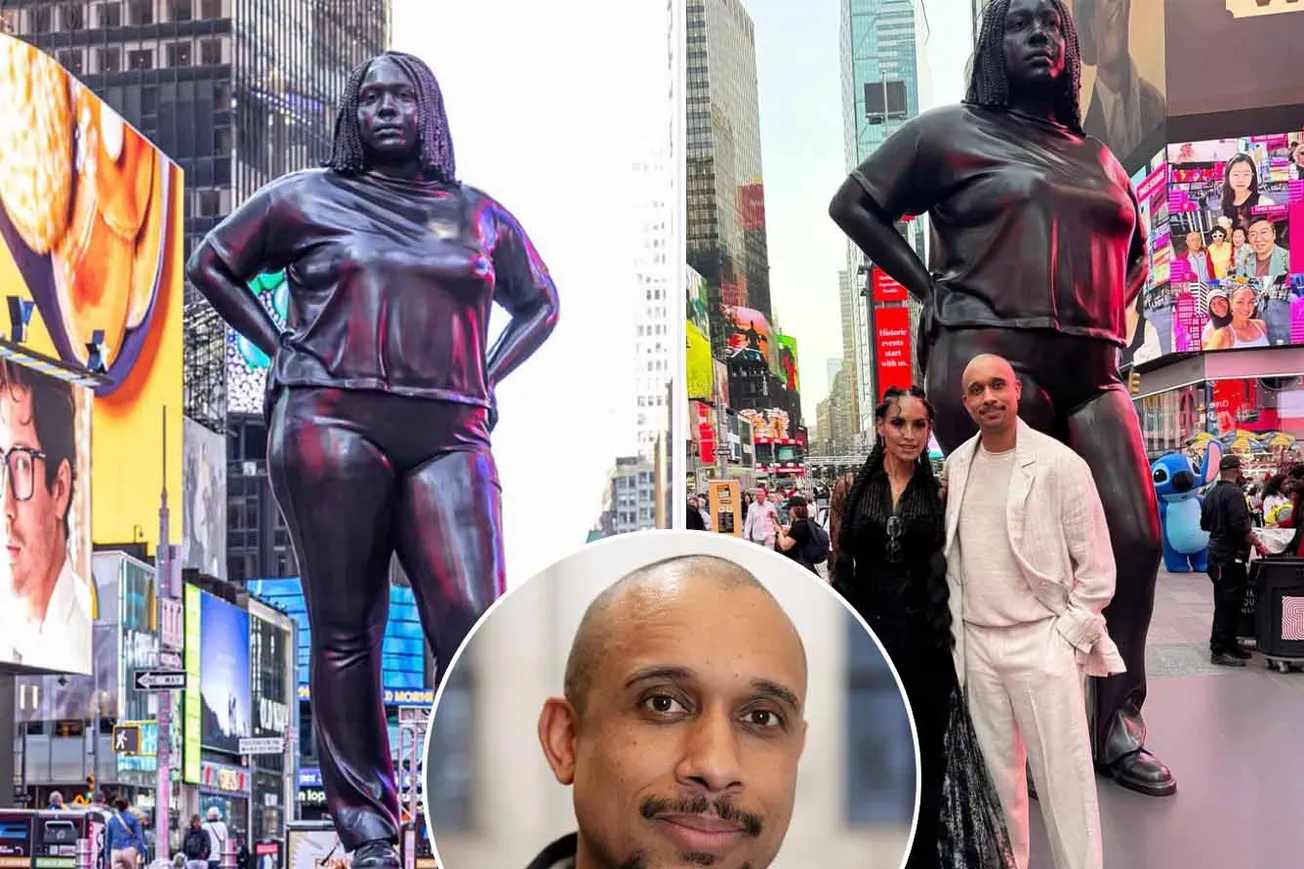In the latest effrontery to good taste and artistry, New York City’s Times Square has unveiled a bronze statue that appears to depict an overweight angry black woman.
“If there was ever a reason to trek to Times Square, this is it,” Time Out declared.
The 12-foot-tall sculpture — bewilderingly named Grounded in the Stars — “reimagines both the monument and monumentality in Times Square,” according to the official website.
Grounded in the Stars – A groundbreaking 12-ft bronze sculpture by Thomas J. Price now stands at Times Square until June 17, 2025! 🌟 This piece challenges traditional public monuments, celebrating diversity and inviting everyone to interact. Don’t miss the stunning animations… pic.twitter.com/IEOoPwgKmw
— Artmajeur (@artmajeur) April 30, 2025
The sculptor, Thomas J Price, said the work aims to unite people from all walks of life.
“I hope Grounded in the Stars and Man Series will instigate meaningful connections and bind intimate emotional states that allow for deeper reflection around the human condition and greater cultural diversity,” said Price, who, on his personal site, states one of his goals is “subverting structures of hierarchy.”
(The Man Series, which will run in Times Square through the month of May, consists of the disembodied, stop-motion animated faces of blinking black men displayed upon 95 massive screens.)
Price has created similar works in Rotterdam and Florence, including a 12-foot, gold-colored statue of a black woman scrolling her phone.
Apparently she has a big family. We have one of her cousins on speaker phone in Piazza della Signoria in Florence :( This is intentional uglification, the normalisation of our demoralisation :( pic.twitter.com/cBq3Tsyf1V
— hello-mynameis (@hello_mynameis0) May 7, 2025
Grounded in the Stars must certainly be an ironic name for the noticeably non-ethereal woman represented by the sculpture displayed in one of the world’s most iconic public spaces. In plain clothes, the braided figure is positioned contrapposto with her hands on her hips. The stance, in which a figure stands with most of the weight placed on one leg, is a nod — perhaps even a parody — of Michelangelo’s David, the most famous contrapposto sculpture in the world.
Though the stark juxtaposition between Grounded in the Stars and David might intend to glorify the mundane, the statue more effectively captures an aesthetic that despises beauty. The classical cornerstones of Renaissance art — including Strazza’s breathtaking The Veiled Virgin — dwarf the deliberate drabness of Price’s unremarkable woman.
In the final analysis, a need to subvert hierarchy leads to the hatred of that which is beautiful — the family unit being the most primary example of beauty. In contrast to that ideal unit, Price produces lone women who appear to be angry, bored or stoic. Rather than singling out these features as undesirable, he’s elevating them as high art.
When he says a work like Grounded in the Stars should allow the viewer “to imagine what it would be like to inhabit space neutrally without preconceived ideas and misrepresentation,” he’s being refreshingly forthcoming. Price knows he’s created a bold, confrontational provocation, and if you acknowledge it as such that positions you as someone deluded by “preconceived ideas and misrepresentation.”
Any desire for beauty in art is viewed as a racist dog whistle. Any criticism of art designed to “subvert hierarchy” is considered overt racism — if not “literal” genocide.
The form of the woman in Times Square is formidable, but the content, the subject, represents the kind of incompetence that stems from ideology. The unhealthy physique and defiant stance of the woman are unworthy of such a heightened depiction. She’s an idol to indulgence and hostility.
There is always a place for subversive art, but there must also be room for beautiful art; art that captures the perfect components of human nature. Grounded in the Stars is just the latest example of the trendy celebration of aesthetic dullness.






![They Silenced the Experts: Dr. Drew Blows the Whistle on COVID Cover-Up [WATCH]](/content/images/size/w1304/format/webp/2025/05/covid-leftist-extremism.png)
Conversation